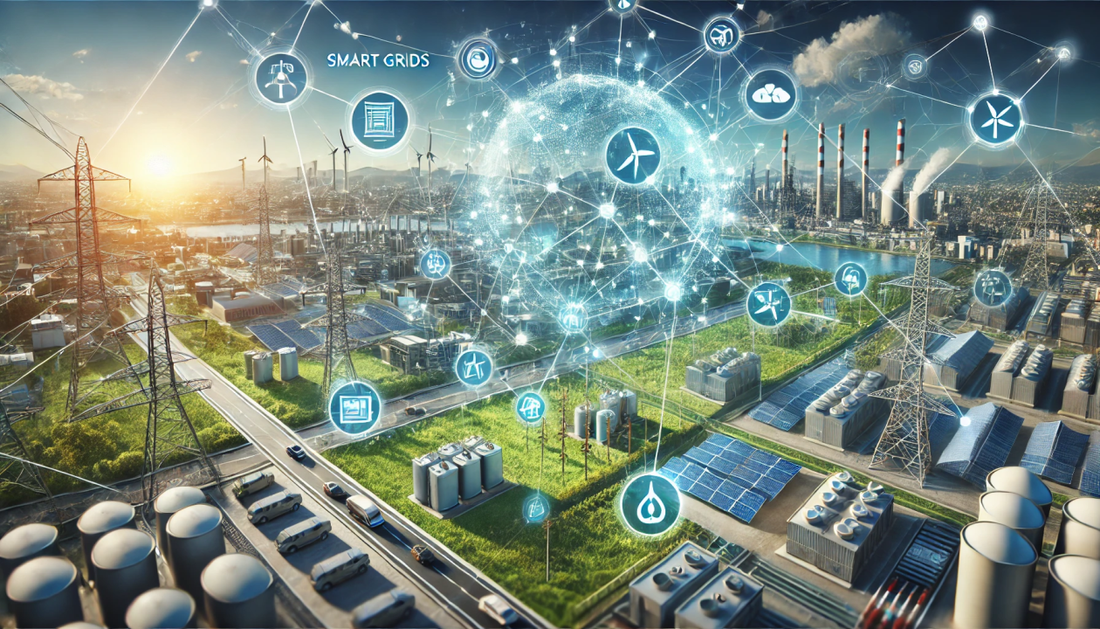
Smart Grids and Renewable Energy: The Power Systems of the Future
Share
The global energy landscape is undergoing a transformative shift as nations transition from fossil fuels to cleaner and more sustainable energy sources. At the heart of this evolution are smart grids and renewable energy systems, which together are paving the way for efficient, reliable, and eco-friendly power solutions.
The Need for Smart Grids
Traditional power grids, while functional, lack the flexibility and intelligence required to meet the demands of modern energy systems. With the increasing adoption of renewable energy and growing energy consumption, the limitations of conventional grids have become evident:
- Intermittent Energy Supply: Renewable sources like solar and wind produce variable power output, creating challenges for energy distribution.
- Increasing Demand: Electrification of transportation and urbanization are driving higher energy demands.
- Outdated Infrastructure: Aging grids struggle to handle the complexity of modern energy networks.
Smart grids address these challenges by incorporating advanced technology and data-driven insights into the energy distribution process.
What is a Smart Grid?
A smart grid is an advanced power network that uses digital communication and automation to monitor, control, and optimize the generation, distribution, and consumption of electricity. These systems integrate various components such as sensors, smart meters, and energy storage to enhance grid performance and reliability.
Key Features of Smart Grids
- Real-Time Monitoring: Sensors and IoT devices enable continuous monitoring of energy flow and grid performance.
- Demand Response: Smart grids can adjust energy supply based on real-time consumption patterns, balancing supply and demand effectively.
- Integration of Renewables: Advanced grid systems accommodate diverse energy sources, ensuring seamless integration of solar, wind, and other renewables.
- Self-Healing Capabilities: Smart grids detect and resolve faults automatically, minimizing downtime and disruptions.
The Role of Renewable Energy
Renewable energy is at the core of the global energy transition, offering a sustainable and low-carbon alternative to fossil fuels. Technologies like solar panels, wind turbines, and hydroelectric dams are becoming increasingly prevalent, thanks to advancements in efficiency and affordability.
Benefits of Renewable Energy
- Environmental Impact: Renewable energy significantly reduces greenhouse gas emissions, mitigating climate change.
- Energy Security: Harnessing local energy sources reduces dependence on imported fuels.
- Economic Growth: The renewable energy sector creates jobs and drives innovation in energy technology.
However, the variability of renewable energy requires sophisticated grid systems to manage its integration effectively, making smart grids indispensable.
How Smart Grids and Renewables Work Together
The synergy between smart grids and renewable energy systems is key to building a sustainable energy future. Smart grids facilitate the efficient use of renewables by:
- Energy Storage: Smart grids optimize the use of batteries and other storage solutions to manage excess energy generated by renewables.
- Grid Flexibility: They enable dynamic energy flow, redirecting surplus power to areas of high demand.
- Enhanced Forecasting: Data analytics and AI in smart grids improve the prediction of renewable energy output.
- Decentralized Energy Systems: Smart grids support microgrids and distributed energy resources, empowering local energy production and consumption.
Challenges and Opportunities
While the combination of smart grids and renewable energy holds immense promise, challenges remain:
- High Initial Costs: Upgrading infrastructure and deploying smart grid technologies require significant investment.
- Cybersecurity Risks: The digital nature of smart grids makes them vulnerable to cyber threats.
- Regulatory Barriers: Policy frameworks must evolve to support innovation and integration.
Despite these obstacles, the potential benefits far outweigh the challenges. Investment in smart grid technology and renewable energy continues to grow, driven by government incentives, private sector initiatives, and public awareness.
The Path Forward
To realize the full potential of smart grids and renewable energy, a collaborative approach is essential. Governments, industries, and communities must work together to:
- Develop robust policy frameworks that incentivize innovation.
- Invest in research and development to improve technology efficiency.
- Educate the public on the importance of sustainable energy practices.
Conclusion
Smart grids and renewable energy are revolutionizing the energy landscape, offering a pathway to cleaner, more efficient, and reliable power systems. By embracing these technologies, we can create a sustainable energy future that meets the demands of a growing world while preserving the environment for generations to come.
